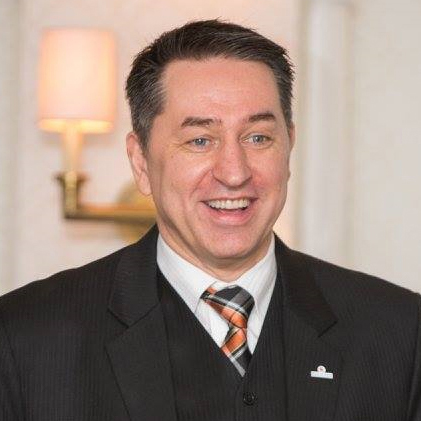
The National Science Foundation(NSF) has awarded $750,000 to a group of University of Maryland researchers to tackle the issue of nutrition and food security. The title of the project is the “Mid-Atlantic Food Resiliency Network - Securing the Future of Food through a Multi-Mindset Approach.”
Robert H. Smith School of Business clinical professor Oliver Schlake says he’s bringing his extensive experience as a futurist to this effort by “studying patterns, finding factors that influence a food emergency, dialing these factors down and finding out there are certain factors that exist when an urban area becomes a food desert.” He has long been passionate about food in the entrepreneurial space by supporting food entrepreneurs and he sees this study as a continuation of that.
The NSF Convergence Accelerator is sponsoring the work of a multi-disciplinary team that includes Schlake as one of the co-principal investigators. There are four other co-principals – Hee-Jung Song and Caroline Boules of the university’s College of Agriculture and Natural Resources(AGNR), Vanessa Frias-Martinez of the College of Information Studies, and Cheng Gong of the Clark School of Engineering. The principal investigator is Stephanie Lansing of AGNR. The Prince George’s County Food Equity Council is involved as well because the county is the focus of Phase 1. A proposal will be developed for the next steps that if funded, will lead to expanding the research across the Mid-Atlantic region.
“In Prince George’s County, 48% of the population has some sort of food insecurity, whether it’s quality of food, access to food, affordability, etc.” Schlake adds, “20% of all U.S. children have some sort of food insecurity.” Meanwhile, about one-third of U.S. food is thrown away. “It’s ridiculous if you look at those numbers.”
Food waste is at the center of the group’s work. Schlake says, “what we’re trying to do, using the research of these different professors is to anticipate food emergencies and food waste. We’re trying to inform food producers, food distributors, the public and decision-makers about where food waste exists, and how it can be avoided and brought back to the food value chain.” One member of the team is developing a “nano-based sniffer, an indicator that can detect spoiled food before it’s fully spoiled. Just imagine going to a supermarket and it has this detector on the fresh food aisle.”
This interdisciplinary approach which also incorporates the university’s Dining Services, is in line with part of the Smith School’s Strategic Plan, to reimagine learning by creating more integrated and interdisciplinary opportunities for research and learning. This parallels the goal of increasing cross-disciplinary and cross-department research, which is one of the plan’s pillars – Addressing Grand Challenges. According to Schlake, “it will lead to better solutions than when we are singularly minded, just trying to solve a problem from a business perspective. There’s as much technology, science and agricultural understanding as there is business to this.”
Excerpts of this article originally appeared on UMD’s College of Agriculture & Natural Resources website and in Maryland Today.
Media Contact
Greg Muraski
Media Relations Manager
301-405-5283
301-892-0973 Mobile
gmuraski@umd.edu
About the University of Maryland's Robert H. Smith School of Business
The Robert H. Smith School of Business is an internationally recognized leader in management education and research. One of 12 colleges and schools at the University of Maryland, College Park, the Smith School offers undergraduate, full-time and flex MBA, executive MBA, online MBA, business master’s, PhD and executive education programs, as well as outreach services to the corporate community. The school offers its degree, custom and certification programs in learning locations in North America and Asia.